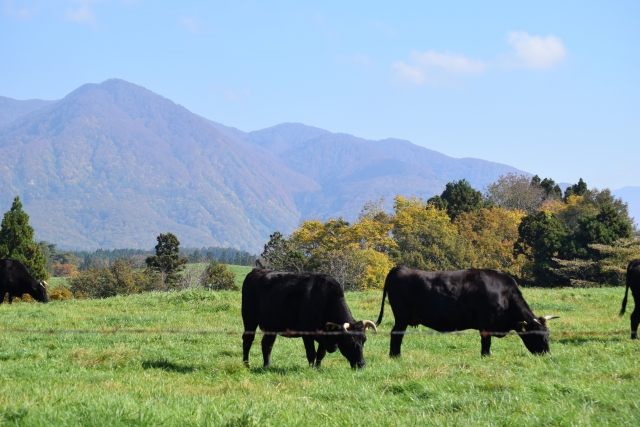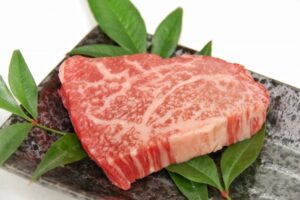Wagyu is a unique breed from Japan, distinct from foreign beef in terms of genetics, breeding methods, meat quality, and flavor. While it is possible to raise cattle outside Japan using similar feeding techniques, differences in genetics, climate, and management make it difficult to perfectly replicate the taste and texture of authentic Japanese Wagyu. As a result, Wagyu and foreign beef each have their own unique characteristics to be appreciated.

| Category | Wagyu | Foreign Beef |
|---|---|---|
| Genetics | Purebred Wagyu (e.g., Kuroge Washu) | Angus, Holstein, Wagyu Cross |
| Feeding Period | 30–36 months | 18–24 months |
| Raising Methods | Individually managed, stress-reduction techniques | Raised in large pastures |
| Feed | Carefully adjusted grain-based diet | Mostly grass or corn-based diet |
| Meat Quality | Rich marbling, tender texture, melts in the mouth | Leaner, firmer texture, strong beefy taste |
| Price | High | Generally lower (except for premium Wagyu Cross |

Genetic Differences
Wagyu cattle have been selectively bred in Japan for generations, focusing on marbling quality. In particular, Kuroge Washu (Japanese Black) has a high percentage of intramuscular fat with a low melting point, giving it a melt-in-your-mouth texture.
On the other hand, most foreign beef comes from breeds such as Angus or Holstein, which are known for their lean meat and firm texture with less marbling. Even in countries that raise “Wagyu,” the cattle are often crossbred Wagyu (Wagyu Cross) rather than purebred Japanese Wagyu.
Differences in Raising Methods
In Japan, Wagyu cattle are raised under highly controlled conditions to minimize stress. Some farms even name their cattle and provide them with specialized care.
Characteristics of Wagyu Farming in Japan
- Longer fattening period: 30 to 36 months
- Stress reduction techniques (moderate exercise, massages, music, etc.)
- Climate and water quality unique to each region are utilized
In contrast, foreign beef is often raised in vast pastures and typically reaches market weight in 18 to 24 months. This shorter feeding period results in leaner meat with less marbling.
Differences in Feeding
The quality of Wagyu fat and its marbling is largely influenced by the type of feed given to the cattle.
Wagyu Feed
- A carefully balanced diet of rice bran, soybean meal, barley, wheat, and corn
- Adjusted based on growth stages to enhance marbling
Foreign Beef Feed
- Mostly corn or grass-based diets
- Aimed at promoting lean muscle growth rather than marbling
While some foreign Wagyu farms use grain-based feeding, they do not adjust the feed as meticulously as in Japan, leading to differences in fat quality and taste.
Differences in Meat Quality
Wagyu beef has a low melting point fat, resulting in a buttery, melt-in-your-mouth texture. The fine marbling ensures a juicy, rich flavor when cooked.
Foreign beef, on the other hand, is leaner and firmer, with a stronger beefy taste. It is often preferred for steak and roast beef, as it retains more chewiness compared to the soft texture of Wagyu.
Differences in Price
Due to the extended feeding period and meticulous care required, Wagyu is significantly more expensive than most foreign beef. High-end Japanese Wagyu, such as Kobe or Matsusaka beef, can cost several hundred dollars per kilogram.
Foreign beef is generally more affordable due to shorter feeding periods and large-scale production. However, premium crossbred Wagyu from countries like the U.S. and Australia is priced higher and offers a meat quality closer to Japanese Wagyu.
Comments